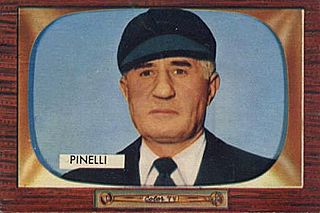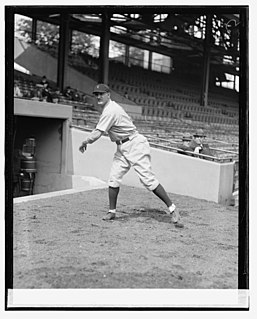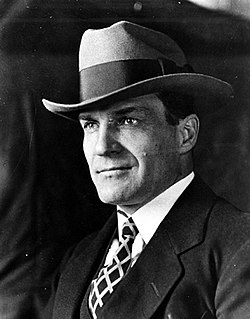
George Herman "Babe" Ruth was an American professional baseball player whose career in Major League Baseball (MLB) spanned 22 seasons, from 1914 through 1935. Nicknamed "The Bambino" and "The Sultan of Swat", he began his MLB career as a star left-handed pitcher for the Boston Red Sox, but achieved his greatest fame as a slugging outfielder for the New York Yankees. Ruth established many MLB batting records, including career home runs (714), runs batted in (RBIs) (2,213), bases on balls (2,062), slugging percentage (.690), and on-base plus slugging (OPS) (1.164); the last two still stand as of 2021. Ruth is regarded as one of the greatest sports heroes in American culture and is considered by many to be the greatest baseball player of all time. In 1936, Ruth was elected into the Baseball Hall of Fame as one of its "first five" inaugural members.

The Pride of the Yankees is a 1942 American film produced by Samuel Goldwyn, directed by Sam Wood, and starring Gary Cooper, Teresa Wright, and Walter Brennan. It is a tribute to the legendary New York Yankees first baseman Lou Gehrig, who died only one year before its release, at age 37, from amyotrophic lateral sclerosis, which later became known to the lay public as "Lou Gehrig's disease".

The Curse of the Bambino was a superstitious sports curse in Major League Baseball (MLB) derived from the 86-year championship drought of the Boston Red Sox from 1918 to 2004. The superstition was named after Babe Ruth, colloquially known as "The Bambino", who played for the Red Sox until he was sold to the New York Yankees in 1920. While some fans took the curse seriously, most used the expression in a tongue-in-cheek manner.

William Bendix was an American film, radio, and television actor, who typically played rough, blue-collar characters. He is best remembered in films for the title role in The Babe Ruth Story. He also portrayed the clumsily earnest aircraft plant worker Chester A. Riley in both the radio and television versions of The Life of Riley. He received an Academy Award nomination as Best Supporting Actor for Wake Island (1942). Bendix was a frequent co-star of Alan Ladd, the two appearing in ten films together; both actors coincidentally died in 1964.

Baby Ruth is an American candy bar made of peanuts, caramel, and milk chocolate-flavored nougat, covered in compound chocolate. It is distributed by the Ferrara Candy Company, a subsidiary of Ferrero.

The 1926 World Series, the 23rd playing of Major League Baseball's championship series, pitted the National League champion St. Louis Cardinals against the American League champion New York Yankees. The Cardinals defeated the Yankees four games to three in the best-of-seven series, which took place from October 2 to 10, 1926, at Yankee Stadium and Sportsman's Park.
The 1932 World Series was a four-game sweep by the American League champions New York Yankees over the National League champions Chicago Cubs. By far its most noteworthy moment was Babe Ruth's "called shot" home run, in his 10th and last World Series. It was punctuated by fiery arguments between the two teams, heating up the atmosphere before the World Series even began. A record 13 future Hall of Famers played in this Series, with three other future Hall of Famers also participating: umpire Bill Klem; Yankee's manager Joe McCarthy; and Cubs manager Rogers Hornsby. It was also the first in which both teams wore uniforms with numbers on the backs of the shirts.

Gene Barry was an American stage, screen, and television actor. Barry is best remembered for his leading roles in the films The Atomic City (1952) and The War of The Worlds (1953) and for his portrayal of the title characters in the TV series Bat Masterson and Burke's Law, among many roles.

Robert William Meusel was an American baseball left and right fielder who played in Major League Baseball (MLB) for eleven seasons from 1920 through 1930, all but the last for the New York Yankees. He was best known as a member of the Yankees' championship teams of the 1920s, nicknamed the "Murderers' Row", during which time the team won its first six American League (AL) pennants and first three World Series titles.
Babe Ruth's called shot was a much-debated moment in baseball history, the home run hit by Babe Ruth of the New York Yankees in the fifth inning of Game 3 of the 1932 World Series, held on October 1, 1932, at Wrigley Field in Chicago. During the at-bat, Ruth made a pointing gesture which existing film confirms, but whether he was promising a home run, or gesturing at fans or the other team, remains in dispute.

Ralph Arthur "Babe" Pinelli, born Rinaldo Angelo Paolinelli, was an American third baseman and umpire in Major League Baseball. Born in San Francisco, his playing career was mostly with the Cincinnati Reds from 1922 to 1927. He also played with the Chicago White Sox (1918) and Detroit Tigers (1920). After that he became a highly regarded National League umpire from 1935 to 1956, officiating in 6 World Series: 1939, 1941, 1947, 1948, 1952 and 1956; he was crew chief for the final two Series. He also umpired in the All-Star game in 1937, 1941, 1950 and 1956, working behind home plate for the second half of the last three games, and he worked in the 3-game series to determine the NL champion in 1946.

Roy Del Ruth was an American filmmaker.
The 1932 New York Yankees season was the team's 30th season in New York, and its 32nd season overall. The team finished with a record of 107–47, winning their seventh pennant, finishing 13 games ahead of the Philadelphia Athletics. New York was managed by future Hall of Famer Joe McCarthy. A record nine future Hall of Famers played on the team.

The Babe Ruth Story is a 1948 baseball film biography of Babe Ruth, the famed New York Yankees slugger. It stars William Bendix as the ballplayer and Claire Trevor as his wife. Critics faulted the film's heavy-handedness and direction, and it is said by many to be one of the worst films ever made.

Joseph Benjamin Shaute was a pitcher in Major League Baseball. He pitched from 1922 to 1934, and during his 13-year career, he played primarily for the Cleveland Indians. He attended Juniata College and Mansfield University of Pennsylvania.

Henry Louis Gehrig was an American professional baseball first baseman who played 17 seasons in Major League Baseball (MLB) for the New York Yankees (1923–1939). Gehrig was renowned for his prowess as a hitter and for his durability, which earned him his nickname "The Iron Horse". He was an All-Star seven consecutive times, a Triple Crown winner once, an American League (AL) Most Valuable Player twice, and a member of six World Series champion teams. He had a career .340 batting average, .632 slugging average, and a .447 on base average. He hit 493 home runs and had 1,995 runs batted in (RBI). He still has the highest ratio of runs scored plus runs batted in per 100 plate appearances (35.08) and per 100 games (156.7) among Hall of Fame players. In 1939, he was elected to the Baseball Hall of Fame and was the first MLB player to have his uniform number (4) retired by a team.
John Dale Sylvester was an American packing machinery company executive who was best known for a promise made to him by Babe Ruth during the 1926 World Series. Sylvester was seriously ill and hospitalized. Ruth said he would hit a home run on his behalf, which was followed by what was widely reported at the time as Sylvester's miraculous recovery.
Mel Berns was an American make-up artist. He was the Head of Makeup at RKO Pictures for more than twenty years.

Down Mexico Way is a 1941 American Western film directed by Joseph Santley and starring Gene Autry, Smiley Burnette, and Fay McKenzie. Based on a story by Dorrell and Stuart E. McGowan, the film is about a singing cowboy who comes to the aid of the townspeople of Sage City who are victims of a nefarious scam.

Erle Vansant Painter, or Doc, was an American chiropractor and athletic trainer for the Boston Braves (1929) and New York Yankees (1930–1942). He also helped direct the Brooklyn YMCA, and was a professor at Florida Southern College. Due to his role as trainer for the Yankee organization he was credited with "modernizing training methods for professional athletes".















